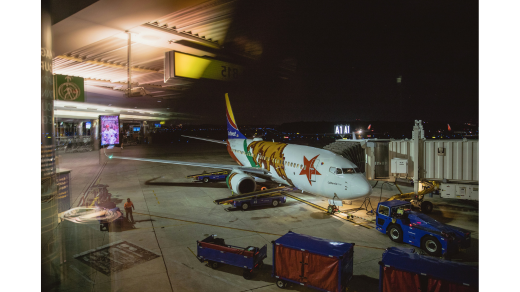40 Questions Answered About Adventure Tourism for Thrill-Seekers
1. What is adventure tourism?
Adventure tourism is traveling to remote or exotic locations to participate in activities that provide excitement, physical challenges, and the chance to experience nature in its raw form. Activities include trekking, mountaineering, white-water rafting, or skydiving.
2. What are some of the most popular adventure tourism activities?
Popular activities include rock climbing, bungee jumping, zip-lining, white-water rafting, scuba diving, kayaking, trekking, paragliding, skiing, and safaris.
3. Is adventure tourism safe?
Adventure tourism can be safe if you choose reputable operators, follow safety protocols, and use the correct equipment. Always research the activity and ensure it’s suitable for your fitness level and experience.
4. Do I need to be physically fit for adventure tourism?
While physical fitness can enhance your experience and safety, there are adventure tourism activities that suit all levels. However, for more extreme activities like mountaineering or skydiving, a good level of fitness and preparation is recommended.
5. What destinations are best for adventure tourism?
Top destinations for adventure tourism include New Zealand (for bungee jumping and trekking), Costa Rica (for zip-lining and white-water rafting), Switzerland (for skiing and mountaineering), and Africa (for safaris and hiking).
6. What should I bring on an adventure tourism trip?
You should pack appropriate clothing and gear for your activity, including sturdy shoes, waterproof clothing, sunscreen, insect repellent, first-aid kit, and any special equipment needed for your adventure.
7. How do I choose the right adventure tourism activity for me?
Think about your interests, fitness level, experience, and any physical limitations. Begin with less intense activities such as hiking or kayaking, and then work your way up to more extreme sports if you are looking for a greater challenge.
8. What are some affordable adventure tourism activities?
Budget-friendly options include hiking, camping, cycling, and exploring national parks. Local activities like zip-lining or kayaking on lakes and rivers may also offer adventure without a high price tag.
9. What are the safety precautions to be followed in adventure tourism?
Always follow guides’ instructions, wear proper safety gear, check weather conditions, ensure your equipment is in good condition, and choose reputable operators with safety records.
10. Am I allowed to go for adventure tourism if I am a novice?
Yes, many adventure tourism activities are for novices as well, like guided hikes, introductory scuba dives, or easy-level zip-lining. Opt for novice-friendly experiences and seek professional instructors.
11. Is there any age limit for adventure tourism?
The provider and activity can determine age limits. For instance, some adventure activities might only be allowed at a minimum age or have maximum age limits like white-water rafting or rock climbing. One should always seek the guidelines with the operator.
12. How do I identify legitimate adventure tourism operators?
Research online reviews, check credentials, and look for companies that prioritize safety standards, have experienced guides, and follow industry regulations. Ask for certifications such as those from adventure tourism safety organizations.
13. What is the difference between adventure tourism and eco-tourism?
Eco-tourism aims at responsible travel that will naturally benefit the environment and communities, whereas adventure tourism is booming on excitement-seeking actions and physical confrontations. Still, both types of tourism often overlap, and in practice, especially in nature-based activities.
14. It is possible to incorporate adventure tourism with relaxation.
Yes, many destinations offer a mix of both. For example, after a day of trekking, you can relax in a spa, or after an intense rafting trip, enjoy a peaceful beach. Look for destinations that offer a variety of activities.
15. What are the benefits of adventure tourism?
Adventure tourism helps in physical fitness, provides an adrenaline rush, fosters personal growth, builds confidence, and allows travelers to explore off-the-beaten-path destinations. It’s also an opportunity to disconnect from everyday life.
16. How do I prepare for an adventure tourism trip?
Research your destination and activity, get in shape (if necessary), ensure your gear is suitable, and familiarize yourself with any safety protocols. You can also practice basic skills if needed, such as rock climbing or navigation.
17. What’s the best season for adventure tourism?
The best season depends on the activity and destination. For skiing, winter is ideal, while hiking and trekking are often best in spring and fall. For activities like scuba diving or snorkeling, tropical destinations are ideal year-round.
18. How much does adventure tourism cost?
Costs vary widely from destination to destination, activity type, and degree of luxury. Budget activities can be hiking, camping, among others, free or very cheap while extreme sports activities such as skydiving or helicopter tours are highly expensive.
19. Can one do adventure tourism on a shoestring budget?
Yes, adventure tourism can be affordable. Choose activities such as hiking, cycling, or backpacking and stay in budget accommodations like hostels or campgrounds. Booking in advance or choosing off-season dates can also lower costs.
20. What equipment is required for adventure tourism?
Basic equipment includes the right clothing, shoes, and equipment for the activity (such as a helmet for climbing, harness for zip-lining, and wetsuit for scuba diving). Some activities offer equipment, while others require you to bring your own.
21. Can families engage in adventure tourism?
Yes, many adventure tourism activities are family-friendly. Look for family-oriented experiences like zip-lining, nature hikes, canoeing, and wildlife safaris that offer a safe and fun experience for all ages.
22. What are some lesser-known adventure tourism destinations?
Consider destinations like Iceland for glacier hiking and volcanic landscapes, Bhutan for spiritual treks and cultural exploration, or Nepal for trekking in the Himalayas. These destinations offer unique adventures without the crowds.
23. What’s the attraction in extreme adventure tourism?
Extreme adventure tourism is very exhilarating and lets a person test his or her limits. It can also promote individual growth, self-confidence, and can provide experience that really pushes you out of your comfort zone.
24. How do I take this adventure tourism sustainable?
Choose eco-friendly operators, minimize environmental impact by staying on designated trails, avoid disturbing wildlife, and support local communities by purchasing locally made goods. Avoid single-use plastics and offset your carbon footprint.
25. What’s the best way to document my adventure tourism experience?
Take pictures or record videos of what you do, which will make for a very good documentation of the experience. Many adventure tourists also keep travel journals to jot down their thoughts and experiences or share on blogs and social media.
26. Can I mix adventure tourism with cultural experiences?
Yes, many adventure tourism destinations offer a combination of thrilling activities and cultural immersion. For example, you can trek in the Andes while learning about indigenous traditions or go on a safari while staying in a local village.
27. Are there guided tours for adventure tourism activities?
Yes, most adventure tourism activities are best experienced with a guide. Guided tours ensure safety, provide expert knowledge, and help you navigate the challenges of activities like mountaineering, trekking, or diving.
28. What is the best adventure tourism activity for beginners?
For starters, activities like hiking, kayaking, or zip-lining can be attempted. These offer adventure without the need for specialized skills or equipment. Many destinations offer beginner-friendly versions of more extreme activities like rock climbing or rafting.
29. What are some risks associated with adventure tourism?
This includes the risk of physical injury from extreme weather conditions, wildlife exposure, or mishaps caused by poor equipment and inexperience. Safety measures would then be taken: proper gear will be worn and operators should have a good reputation.
30. What are travel insurance options in adventure tourism?
Adventure tourism travel insurance generally covers injuries, trip cancellations, lost equipment, and emergency evacuation. Ensure your policy includes coverage for the specific activities you plan to participate in, such as trekking or diving.
31. How do I ensure my safety during adventure tourism?
Make sure you use the right equipment, follow guidelines, and engage in activities at your skill level. Always monitor the weather and stay hydrated while ensuring you are physically prepared for what you are going to do.
32. How do I know if an adventure tourism operator is reliable?
Always opt for operators accredited by reputable accreditation bodies, reviews on the online platform, and safety compliance
Ask about your insurance and any risk management the operator has.
33. Adventure tourism and Mental Health
In adventure tourism stress is reduced with a better outlook and clarity for life. This offers a break for routine and relates one to a natural world to achieve personal experiences and build on confidence.
34. Why take on solo adventure tourism?
Solo adventure tourism is a method of exploration at your own pace. You will be able to challenge yourself and engage in self-discovery. It can also empower, letting you connect with nature and other like-minded travelers.
35. Adventure tourism for the thrill-seeker
Thrill-seekers will enjoy activities such as skydiving, bungee jumping, white-water rafting, scuba diving in waters infested with sharks, or climbing difficult mountain peaks like Mount Kilimanjaro.
36. What should I do if I have an injury during adventure tourism?
If you sustain an injury, inform your guide immediately. Follow their emergency procedures, get medical help as needed, and make sure you have travel insurance that covers emergency medical services.
37. How can I overcome my fear of extreme adventure tourism activities?
Start with less intimidating activities, work together with seasoned guides, and take deep breaths that will lead to focusing on the rewards and experiences. Small steps will help you overcome fears.
38. Can adventure tourism be educational?
Indeed, most adventure tourism activities, such as wildlife safaris, archaeological hikes, or cultural expeditions, contain elements of education. They provide insight into the local ecosystem, history, and traditions in ways to enrich your traveling experience.
39. How to keep fit for adventure tourism?
Cardio and strength training plus flexibility training would be a must in your work out. There are several sports that can prepare you for adventures, such as hiking, cycling, swimming, or running for stamina, while strength training prepares the body for adventure.
40. What are some advantages of group adventure tourism?
Group adventure tourism provides an opportunity to bond with others while having thrilling experiences together. It’s also usually less expensive.

